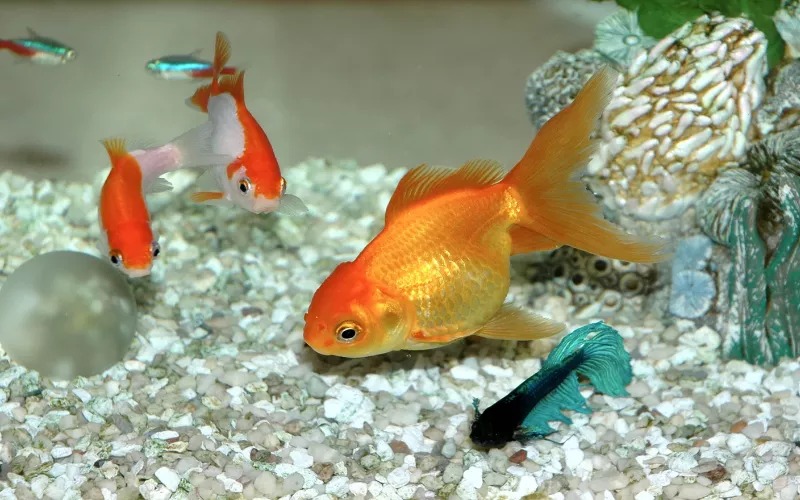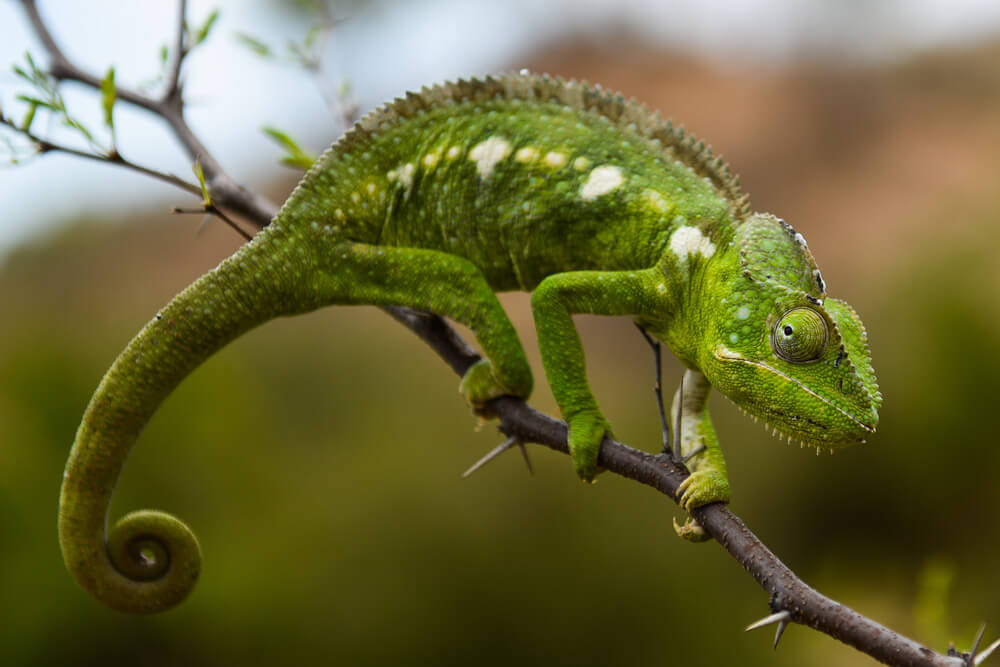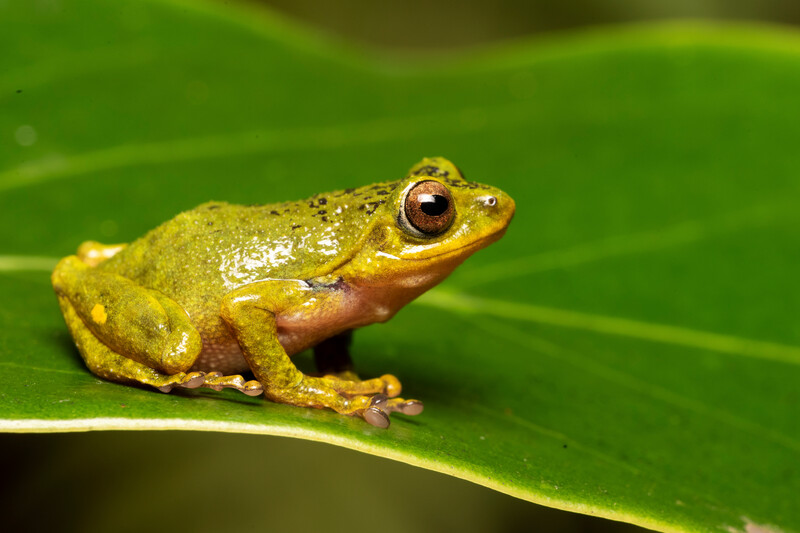Explore Top 9 Animals That Are Not Mammals (With Pictures)
When we think of animals, our minds often jump to furry critters like dogs, cats, and bears. However, the animal kingdom is a vast and diverse realm that extends far beyond just mammals. From the awe-inspiring world of birds soaring high above us to the mysterious depths of the oceans where fish glide effortlessly, there exists a plethora of creatures that defy the mammalian norm.
In this article, we will embark on a journey to explore some of nature’s most fascinating beings – animals that are not mammals. Join us as we delve into the extraordinary lives and unique characteristics of these non-mammalian creatures that inhabit our planet in ways both bizarre and beautiful.
What Is A Mammal?
Mammals are a class of vertebrate animals characterized by the presence of mammary glands, which produce milk to nourish their young. They also have hair or fur covering their bodies, and typically give birth to live young (although there are some exceptions like monotremes that lay eggs). Mammals are warm-blooded, meaning they can regulate their body temperature internally.
There are over 5,400 species of mammals, ranging from tiny shrews to massive whales. They are found in diverse habitats around the world, from deserts to forests to oceans. Mammals play crucial roles in ecosystems as predators, prey, and seed dispersers, contributing to the overall balance and health of the environment.
Animals That Are Not Mammals
Below is the list of non mammal animals:
| Number Of Animals | Animals That Are Not Mammals |
| #1 | Birds |
| #2 | Fish |
| #3 | Reptiles |
| #4 | Amphibians |
| #5 | Great White Sharks |
| #6 | Flamingos |
| #7 | Emperor Penguins |
| #8 | Cockroaches |
| #9 | Pigeons and Doves |
Birds
Birds are a fascinating group of animals that exhibit unique characteristics not seen in mammals. One distinguishing feature is their ability to lay eggs, which sets them apart from live-bearing mammals. Another interesting aspect of birds is their feathered wings, allowing them to fly and soar through the skies with grace and agility.

Their diverse range of vibrant colors and intricate plumage patterns make them a delight to observe in nature. Birds also have hollow bones that reduce their weight, enabling them to achieve impressive speeds while flying. The complex vocalizations and songs produced by birds add an enchanting melody to the natural world around us.
Facts: As of now, there are approximately 10,000 to 11,000 recognized species of birds worldwide.
Also read: Strongest Birds In The World.
Fish
Fish, a diverse group of aquatic vertebrates, are fascinating creatures that play a crucial role in marine ecosystems. With over 34,000 known species, fish come in various shapes and sizes, from the tiny seahorse to the majestic whale shark. Unlike mammals, fish rely on gills to extract oxygen from water instead of lungs.

The incredible adaptability of fish allows them to thrive in almost every type of aquatic environment, from deep-sea trenches to freshwater rivers. some fish possess unique features like bioluminescence or electric organs that serve different purposes from communication to defense strategies against predators.
Their stunning array of colors and unique behaviors make them a popular subject for underwater photographers and nature enthusiasts alike. Despite facing numerous threats such as overfishing and habitat destruction, fish continue to amaze us with their resilience and ability to survive in changing environments.
Reptiles
Reptiles are often misunderstood creatures, portrayed as cold and emotionless. However, their fascinating characteristics make them an integral part of our ecosystem. With their scaly skin and unique way of moving, reptiles like snakes and lizards have adapted to thrive in various environments around the world. These ancient animals have been around for millions of years, showcasing incredible resilience and survival instincts.

One intriguing fact about reptiles is their ability to regulate body temperature through external means such as basking in the sun or seeking shade. This remarkable adaptation allows them to remain active even in extreme conditions. Some reptiles, like chameleons, possess the extraordinary ability to change color for camouflage or communication purposes. Their diversity in size, shape, and behavior showcases the complexity of these creatures beyond just being cold-blooded animals.
Facts: The world is home to an incredible diversity of reptile species, with estimates suggesting there are approximately 10,000 recognized species.
Amphibians
Amphibians are a fascinating class of animals that straddle the line between aquatic and terrestrial life. With their ability to live both in water and on land, they exhibit an extraordinary level of adaptability to diverse environments. From flashy poison dart frogs to giant salamanders, amphibians come in a stunning array of sizes, shapes, and colors, captivating the imagination of nature enthusiasts worldwide.

One of the most unique aspects of amphibians is their incredibly diverse life cycle. Many amphibians undergo metamorphosis, starting out as aquatic larvae before transforming into adults capable of living on land. This transformation process is not only biologically remarkable but also symbolizes themes of growth and adaptation in the natural world. By living dual lives in multiple habitats throughout their development, amphibians provide researchers with valuable insights into evolution and environmental adaptation.
Facts: As of now, there are approximately 8,000 recognized species of amphibians worldwide.
Non Mammal Animals But Create Milk
Here is the list of animals that are not mammal but create milk:
- Great White Sharks
- Flamingoes
- Emperor Penguins
- Cockroaches
- Pigeons and Doves
Great White Sharks
Scientific Name: Carcharodon carcharias
Class: Chondrichthyes
Great White Sharks, known as one of the ocean’s top predators, may not be the first animal that comes to mind when thinking about milk production. However, these formidable creatures are unique in their ability to produce a substance similar to milk for their young. This milk is not actually produced in mammary glands like in mammals, but rather in a structure called the uterine gland. The nutrient-rich secretion provides vital nourishment for baby Great White Sharks during their early development.

This fascinating adaptation challenges our understanding of milk production and highlights the diversity of strategies used by different species to care for their offspring. While mammalian milk is well-known for its high fat content and essential nutrients, shark milk serves a similar purpose despite being produced through a different biological mechanism. Studying this unconventional method of lactation in Great White Sharks sheds light on the complex evolutionary pathways that have led to diverse parental care strategies in the animal kingdom.
Flamingos
Scientific Name: Phoenicopteridae
Class: Aves
One of the most fascinating aspects of flamingos is their ability to produce a special substance known as crop milk to feed their young. This nutrient-rich milk-like secretion, produced in the upper digestive tract of both male and female flamingos, contains fat, protein, and other essential nutrients necessary for the growth of their chicks. Unlike mammalian milk which is produced by mammary glands, crop milk production in flamingoes showcases a unique adaptation in these non-mammal animals.
The composition and production process of crop milk in flamingoes is still not fully understood by scientists, adding an aura of mystery to this intriguing phenomenon. Some researchers suggest that the bright pink color of flamingo feathers may be attributed to specific pigments obtained from their diet rich in carotenoids. The ability of flamingoes to provide such specialized nutrition highlights the complexity and diversity of reproductive strategies seen across different species in the animal kingdom.
Emperor Penguins
Scientific Name: Aptenodytes forsteri
Class: Aves
Emperor Penguins, despite being non-mammals, possess a unique ability to produce milk for their young. The process, known as milk feeding, involves the male penguins producing a milky substance in their esophagus and regurgitating it to feed their chicks. This behavior is crucial for the survival of the chicks in harsh Antarctic conditions where food may be scarce.

Interestingly, Emperor Penguin milk has a high fat content which helps in providing essential nutrients and energy to the chicks during their early stages of life. This adaptation showcases the incredible evolutionary strategies that these fascinating birds have developed to ensure the survival of their offspring in one of the harshest environments on Earth.
Overall, Emperor Penguins challenge our preconceived notions about milk production being exclusive to mammals. Their unique ability to produce nutrient-rich milk highlights the diversity and complexity of nature’s adaptations, offering an intriguing glimpse into the remarkable ways in which different species have evolved to thrive in challenging environments such as Antarctica’s icy realms.
Cockroaches
Scientific Name: Blattodea
Class: Insecta
Have you ever heard of cockroaches producing milk? This may sound bizarre but it’s true! Scientists have discovered a unique protein crystal produced by Pacific beetle cockroaches that is incredibly nutritious and serves as a complete food source for their offspring. This “milk” is rich in essential amino acids, fats, and sugars, making it an ideal meal for developing cockroach nymphs.
Unlike traditional mammalian milk production, where the young suckle from the mother, cockroach milk is synthesized in the brood sac of the female roach and is fed directly to her young. This fascinating adaptation showcases the remarkable diversity of strategies employed by different species to ensure their offspring’s survival. The discovery of this unconventional form of lactation opens up new avenues for research into alternative sources of nutrition and sustainable food production.
Pigeons and Doves
Class: Aves
Pigeons and doves belong to the group of animals known as Columbidae, which are birds that produce a milky substance called crop milk to feed their young. This unique trait sets them apart from other non-mammalian animals and showcases the diversity of nature’s solutions for nurturing offspring. The composition of crop milk differs from mammalian milk but is still rich in fats, proteins, and other nutrients essential for rapid growth and development.

Interestingly, both male and female pigeons take turns in producing crop milk to feed their chicks, demonstrating a cooperative parenting style that is not commonly seen in the animal kingdom. This shared responsibility helps ensure the survival of their offspring by providing them with a constant source of nutrition until they are able to fend for themselves. The ability of pigeons and doves to produce crop milk challenges traditional notions of mammalian exclusivity when it comes to lactation, highlighting the fascinating adaptations that have evolved in different species over time.
Readmore: Explore the world of Mammals That Can’t Jump.
Final Thoughts
Animals that are not mammals represent a diverse and fascinating array of species in the animal kingdom. From birds to reptiles to amphibians and more, each group has unique characteristics and adaptations that make them well-suited to their environments. By learning about and appreciating these non-mammalian creatures, we can gain a deeper understanding of the incredible biodiversity present on our planet.
It is important to remember that all animals play a vital role in maintaining ecological balance, regardless of whether they are mammals or not. Let’s continue to protect and conserve all forms of life for the benefit of future generations and the health of our planet.
FAQs
Is A Shark A Mammal?
No, a shark is not a mammal. Sharks are actually a type of fish, specifically belonging to the cartilaginous fish group. Unlike mammals, sharks do not have mammary glands to produce milk for their young, nor do they give birth to live young. Instead, most species of sharks lay eggs or give birth to live pups.
Is A Penguin A Mammal?
No, a penguin is not a mammal. Penguins are actually birds, specifically flightless birds that are well-adapted to life in the water. While they share some characteristics with mammals, such as warm-bloodedness and giving birth to live young, penguins lack key mammalian traits like fur or hair and mammary glands for nursing their offspring.
What Animals Are Not Mammals?
Some examples of animals that are not mammals include birds, reptiles, amphibians, fish, and insects. These animals belong to different classes and phyla in the animal kingdom and have unique characteristics that differentiate them from mammals.
- Discover Top 9 White Birds in Florida (With Pictures) - November 7, 2024
- Discover Top 16 Black Birds In South Carolina (With Pictures) - November 6, 2024
- Explore Top 18 Most Famous Yellow Birds in Arizona (With Pictures) - November 5, 2024







